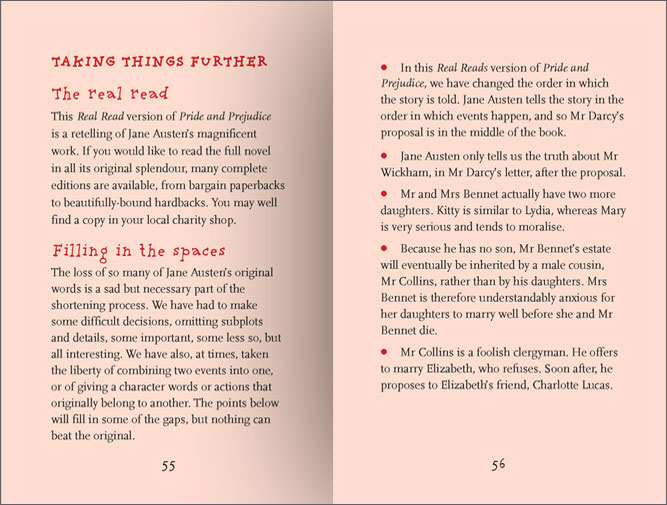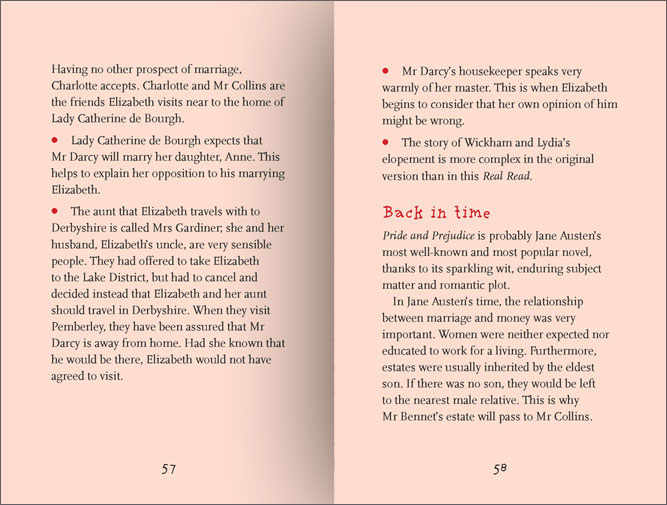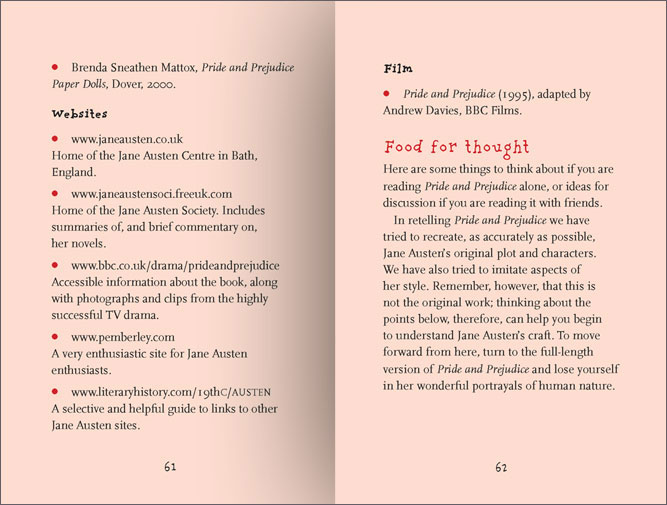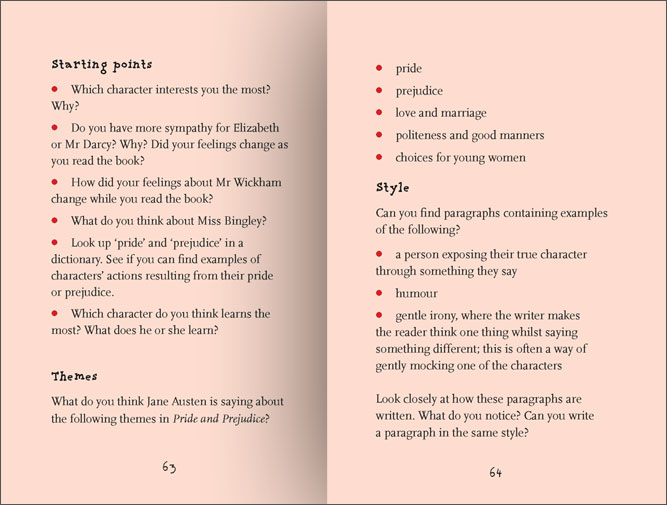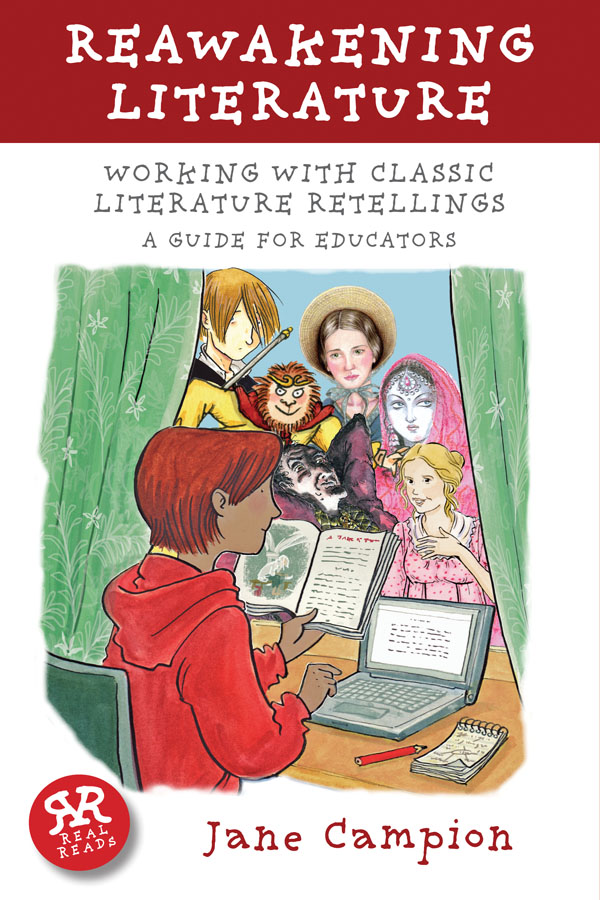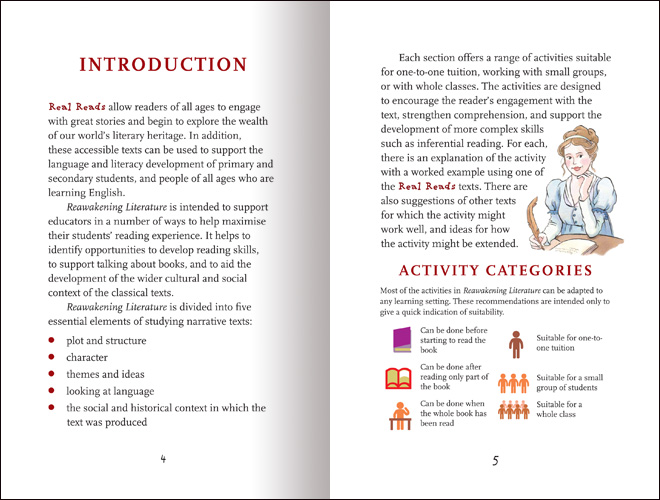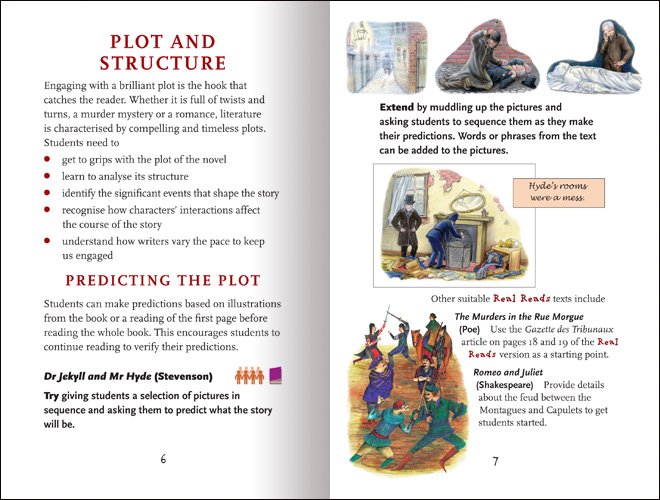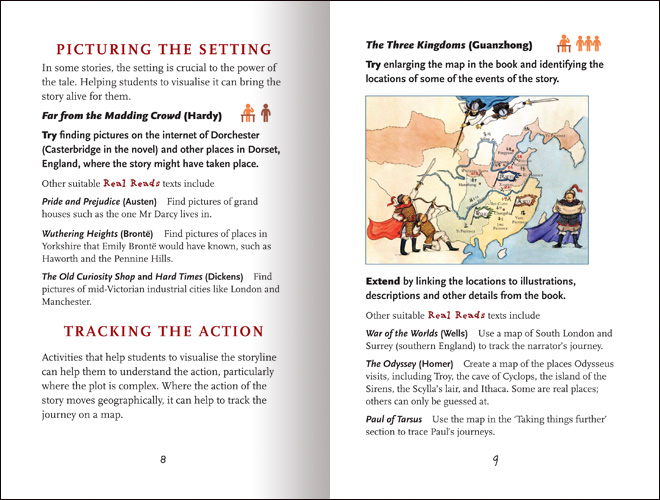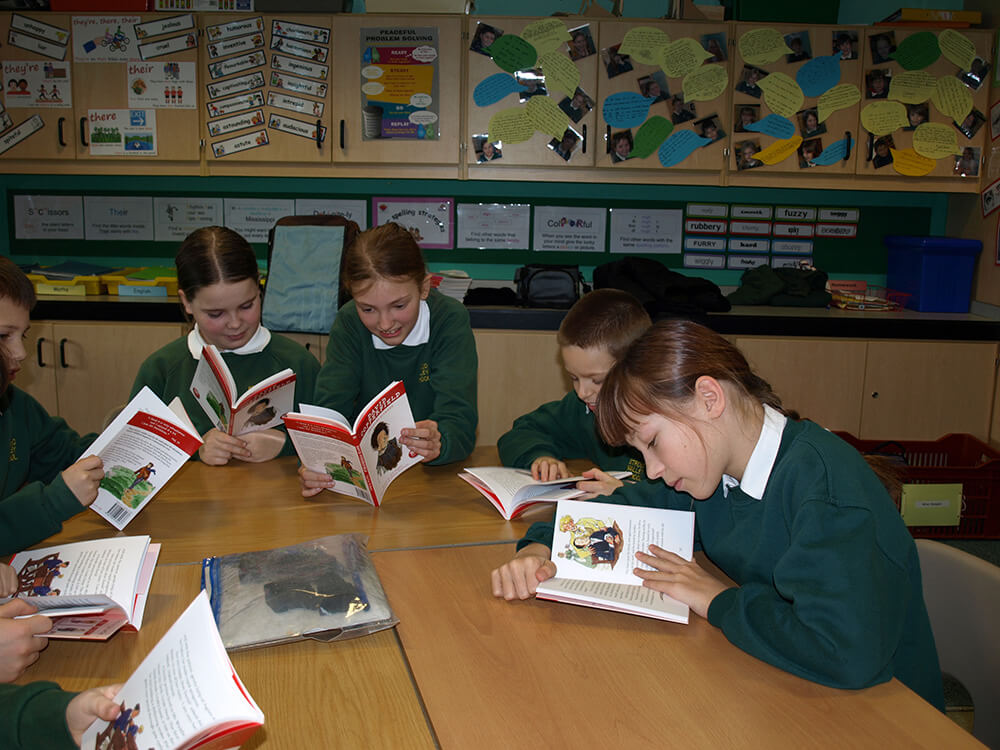
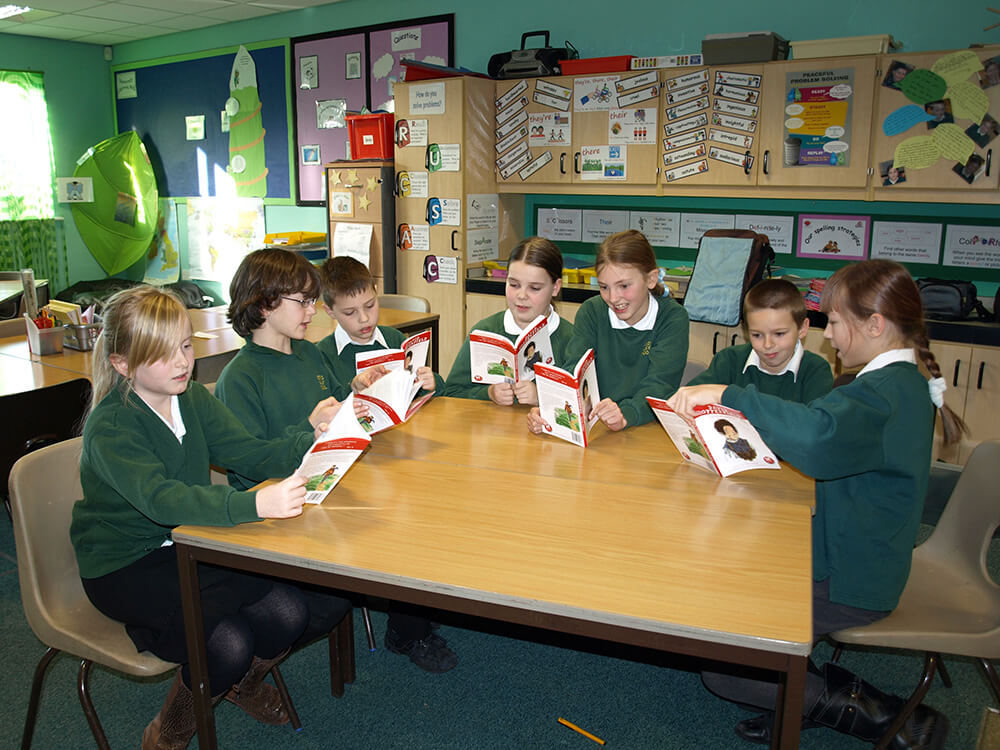
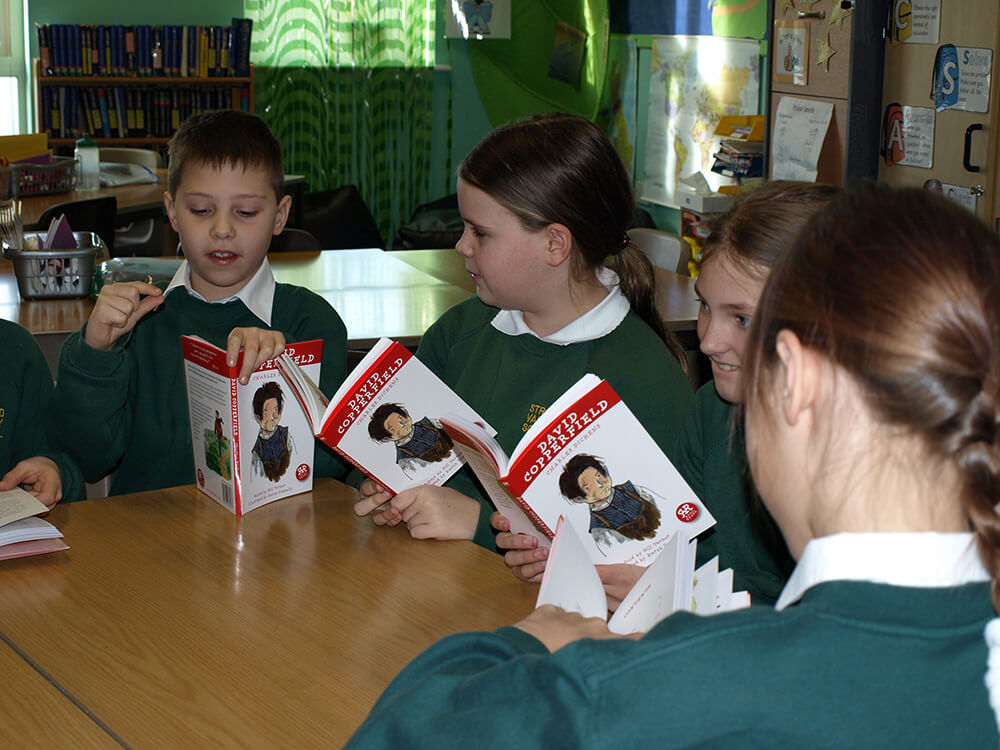

Why more illustrated classics?
by Gill Tavner, regular Real Reads reteller
How many times have you heard somebody speak fondly about a Dickens, Austen or Hardy novel that they read in school or studied for ‘O’ Level or ‘A’ Level, yet they have not read another since?
As an English Teacher and Head of English, I have witnessed the enjoyment experienced by children of all ages and abilities when guided sensitively through a daunting text.
They enjoy using their critical faculties to analyse plot, characters, themes and the writer’s craft. They are capable of lively critical debate. However, only the most confident readers will broaden their reading of classics independently of a teacher, either as children or in their adult life. Most people therefore deprive themselves of the delights offered by some of the most influential writers and thinkers. What a loss for them. What a loss for our society.
I have long thought that there must be a way of making the qualities of ‘classics’ accessible to most readers, but I was unconvinced that abridging was the answer. As a mother of two young children, I have endured the pain of reading abridged fairy tales and Disney films. These often machine-gun the reader with a list of events. Rarely do they offer the reader an opportunity to develop interest in or appreciation of varied vocabulary, style or themes. Do abridged versions need to be like this? Surely there is a way to make an abridged version an enjoyable and enriching rather than simply informative reading experience? Surely this is an important distinction if we aim to nurture keen, confident readers?
In Real Reads we believe we have found an answer to these problems. For many readers, Real Reads will develop a confidence and enthusiasm to address the original, something we try to nurture in the ‘Taking Things Further’ section of every Real Read. For others, who might never have tackled the originals, Real Reads make accessible great stories, great characters and important moral debates which they might otherwise never have encountered.
How Real Reads work in the classroom
Real Reads are accessible texts designed to support the literacy development of primary and lower secondary age children while introducing them to the riches of our international literary heritage. The books can be enjoyed by readers in middle primary, and allow older children with literacy difficulties to engage with great stories. The books are also useful in the teaching of English as an additional language.
Each Real Reads book is separated into three distinct sections: The Characters; The Story; and “Taking Things Further”.
Click on the thumbnails to see larger versions.
The Characters
A useful “cast of characters” list to introduce the reader to the story’s main protagonists and antagonists. Each character description asks a question which intrigues the reader to read further.
The Story
Faithfully retold, our authors treat each story with the respect it deserves – and aim to retell the classics in the style and voice of the original authors, often quoting best-known lines. Real Reads are designed to complement, not replace, great literature, and serve to encourage young and reluctant readers to embrace these wonderful stories and even to approach the full originals undaunted.
Taking Things Further
The ‘Taking things further’ section is designed to provide historical, social and human context to the work in hand. It suggests links to useful online resources, recommends further reading and also TV and films to further immerse the reader in the story and asks challenging and insightful questions to promote a deeper engagement with the work.
Measured Readers
Real Reads uses three widely recognised levelling scales, all of which provide measures of text complexity which can be used to ensure that your child is reading appropriate texts for their reading ability. Learn more about Real Reads levelling here.
Success in the classroom
– Helen Hurworth, Assistant Headteacher, Cottenham Primary School
Reawakening Literature
Accessing and sharing important works of literature is often a daunting experience. Jane Campion’s practical guide is designed to support teachers and parents in maximising children’s reading experience. It identifies a range of opportunities for developing reading skills, and for talking about books. It also suggests ways of developing readers’ appreciation and understanding of the cultural and social contexts of these classics of world literature.
Reawakening Literature: Working with Classic Literature Retellings
A Guide for Educators
The guide is divided into five sections
- plot and structure
- character
- themes
- language
- context
Activities are designed to encourage engagement, strengthen comprehension, and to support the development of more complex skills such as inferential reading. For each activity there is an explanation of the activity with a worked example using one of the Real Reads texts, together with suggestions about how the activity can be extended for the more able.
Jane Campion has ten years’ experience of teaching English Language and English Literature, and has been a lead teacher for English. She is a member of the English Association Secondary Education Committee, and is currently the editor of the association’s journal for secondary teachers, The Use of English.
Download our full brochure here
Contact our office directly:
Tel: +44 (0)1635 30890
Email: info@realreads.co.uk



